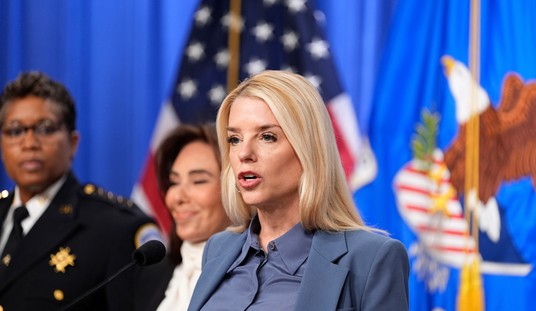You may want to think twice before taking your next deep breath. Every time you exhale, you’re supposedly endangering the planet -- by contributing to global warming.
The Environmental Protection Agency says global warming poses a “serious threat to public health and safety.” That sets the stage for the EPA to regulate, through the Clean Air Act, almost anything that emits carbon dioxide.
CO2, of course, is a naturally-occurring gas. It’s produced whenever a person breathes and, yes, whenever we use any sort of fossil fuel. Driving a car, mowing a lawn, boiling a cup of water, even flipping on a light switch (thus using electricity generated in CO2-emitting power plants) produces carbon dioxide. Yet in 2007 the Supreme Court ruled that carbon dioxide may be considered a pollutant as defined by the Clean Air Act -- thus giving the EPA the authority to regulate it.
Last year the EPA issued an “Advance Notice of Proposed Rulemaking” (ANPR) that shows it plans a strict regulatory regime for CO2. The ANPR and its supporting documents run to 18,000 pages. The level of detail suggests that the EPA has already decided to impose regulations unprecedented in their cost, complexity and scope.
Unelected federal bureaucrats could soon be demanding that manufacturers change how they design their products and insisting that all vehicles meet higher fuel economy standards. In fact, the ANPR outlines just such restrictions in detail. But the agency doesn’t stop with moving objects.
Recommended
Its restrictions also would apply to as many as a million buildings, 200,000 manufacturing plants and 20,000 farms. And dealing with the EPA is no picnic. Strict agency regulation typically imposes an average of $125,000 in costs and requires companies to spend 866 hours every year to complete its bureaucratic forms.
Of course, these regulations would weigh down our already-sagging economy.
A study last year from The Heritage Foundation predicted CO2 regulations could cost up to 800,000 jobs per year in some years. Even in a “good” year, our economy would lose more than half a million jobs every year from 2015 through 2026. (These are net job losses, by the way. The Heritage estimate takes into account all the “green” jobs the government is supposedly going to create, and still shows hundreds of thousands of lost jobs each year.)
Manufacturing would be hit especially hard. As many as 3 million people could end up unemployed. That’s because business owners, faced with a massive carbon tax, would pack up and move their plants to China, India or some other location where the government doesn’t impose exorbitant costs.
Congress hasn’t helped matters with its latest attempt at “cap and trade” legislation. Expect significantly higher energy costs if the American Clean Energy and Security Act of 2009, which recently passed the House, becomes law.
As Heritage energy expert Ben Lieberman testified before Congress, the trouble starts as soon as the bill's provisions take effect in 2012. “For a household of four, energy costs go up $436 that year, and they eventually reach $1,241 in 2035 and average $829 annually over that span,” he said. “Electricity costs go up 90 percent by 2035, gasoline by 58 percent, and natural gas by 55 percent by 2035. The cumulative higher energy costs for a family of four by then will be nearly $20,000.”
Regulating CO2 isn’t what Congress had in mind when it passed the Clean Air Act in the 1970s. If the EPA moves forward, a handful of unelected bureaucrats could wreak havoc on our economy. It’s time lawmakers take a deep breath -- and think twice.


